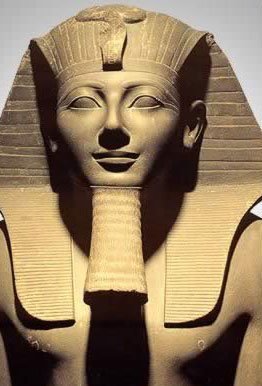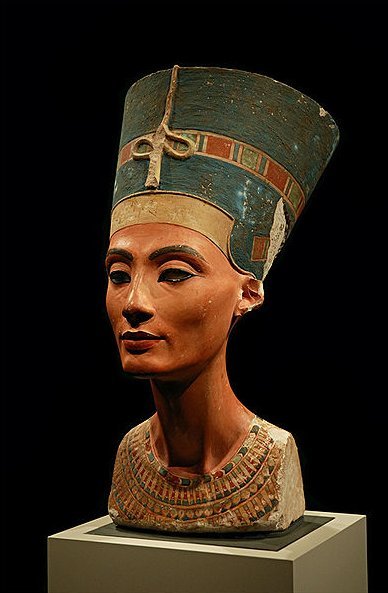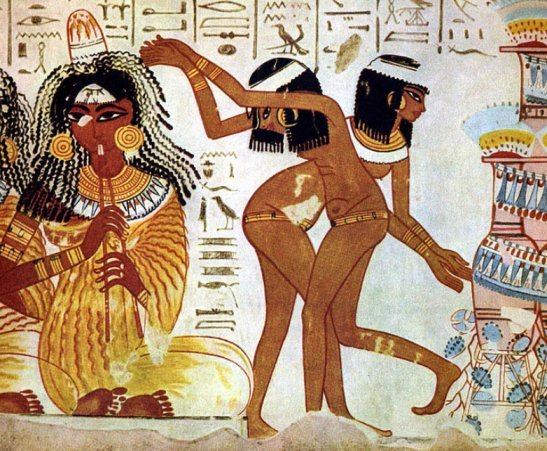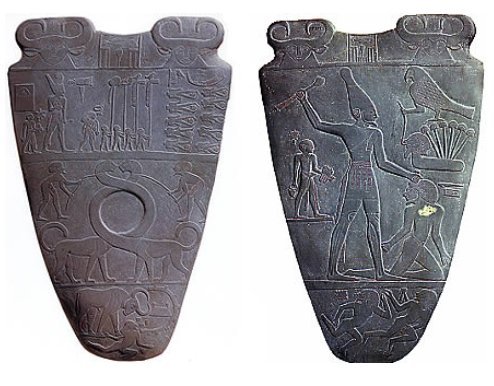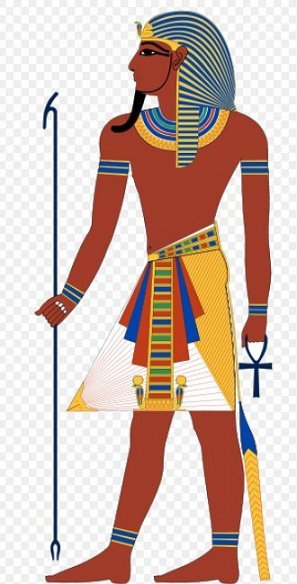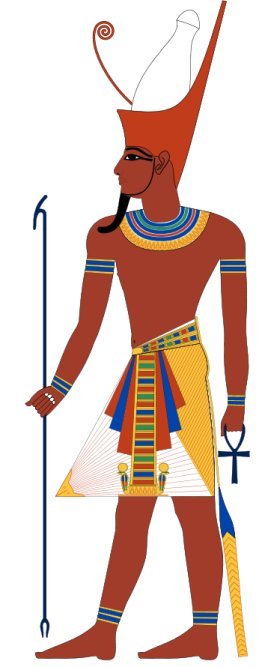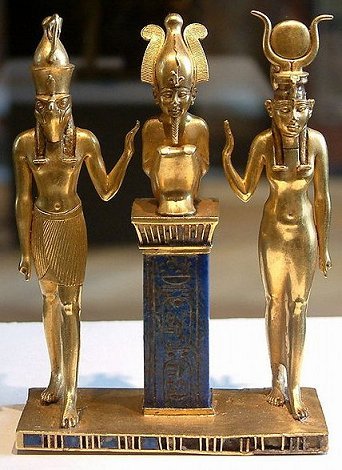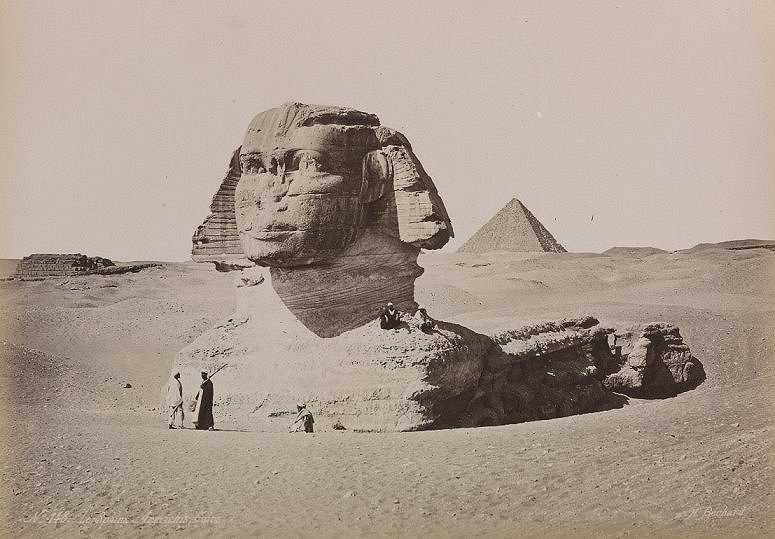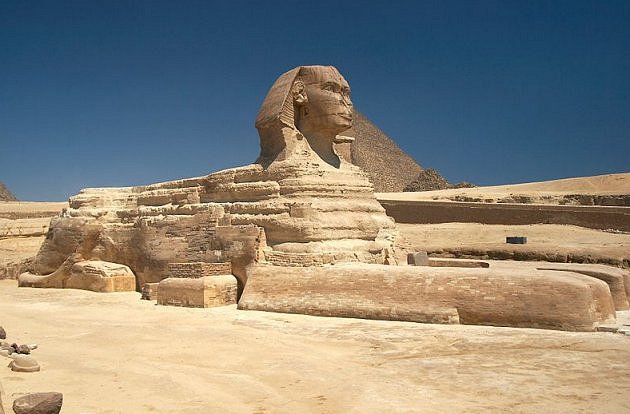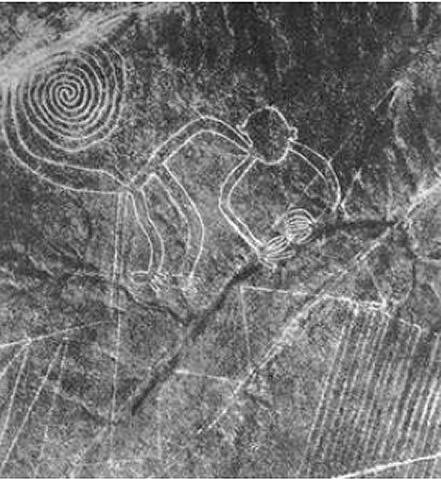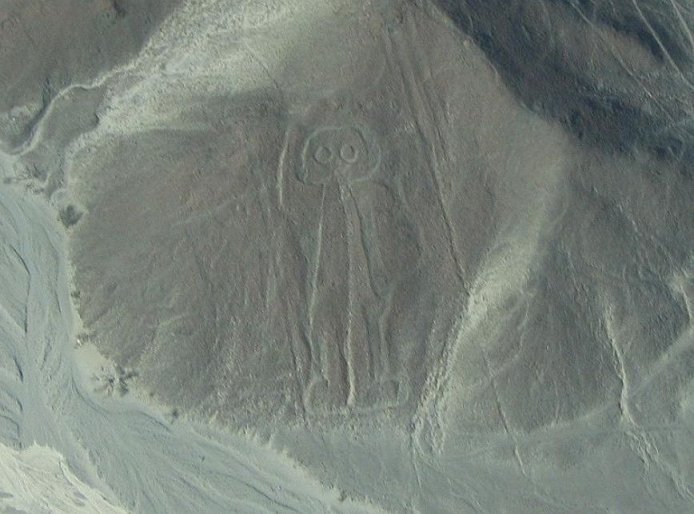| The
Ancient Egyptians It has been suggested that humans have simply evolved from another species or that we were blessed to earth by a religious event. The origin of man’s creation on this earth seems ambiguous because a clear answer hasn’t been presented that is even remotely believable. A trustworthy solution would generate commonality for humanity. Exploration through this chapter begins with a question: How did the first human arrive on this earth? Additionally, is it possible for humans to occupy additional planets elsewhere in the universe? Within the duration of any large number scenario, such as the human existence on earth, anomalies occur that yield extreme results in both intelligent and ignorant realms. Due to the absence of successful information storage media many extraordinary events have occurred on earth that we have no record of. Due to misinterpretation of the information and structures found in Egypt, the controversial great egyptians are generally misunderstood by modern society. A popular perception of these Egyptians is one of an overbearing, sadistic people that used force and slavery to fabricate their monuments and buildings. With many objects created from solid gold, the Egyptians are famous for their wealth and greed. Though modern science has sifted through the remains, which have produced various opinions of the Egyptian civilization lifestyle, it’s difficult to obtain an in-depth understanding of their personal energy, intelligence, and happiness level. Modern science has also failed to explain the purpose the Egyptian structures, monuments, and obsessions. The ancient Egyptian societies were highly advanced and extremely cultured. These societies were divided into two similar civilizations by a great flood. The first Egyptian kingdom existed in a golden age (10,500 BC). This advanced civilization constructed four monolithic pyramids and a great sphinx on the Giza Plains. Historians have traditionally dated the ancient Egyptian society to have begun around 3150 BC and concluded about 30 BC. New evidence and observations have led experts to agree that the pyramids and the great sphinx are from an earlier time. Even ancient pharaohs, kings, and philosophers such as Plato spoke of civilizations much grander than their own and referred to a Golden Age of existence. The crowning achievement and the peak of both Egyptian civilizations were realized in the age of the constellation Leo, at the time of King Osiris with the completion of the third great pyramid and sphinx. (10,500 BC). Later, the traditional Egyptians’ (3150 BC to 30 BC) attempted to re-create the Golden Age Egyptian civilization, but the inability to achieve perfection affected every aspect of their daily living produced mental instability. These impurities led to failed building techniques, which ultimately caused the collapse of the Egyptian society. These traditional Egyptians encompassed many of the teachings of the Golden Age Egyptians with one major exception. Through the next few paragraphs, the mysteries of these Egyptians will unfold, divulging a story of the greatest civilization on earth. Intelligence Modern structures have the distinct attribute of an explainable construction process. This statement is not true for the pyramids of Egypt, in both purpose and design. Beyond the physical attributes of the pyramids is the accuracy level and building material used in their construction. Today it would be difficult to duplicate these monuments created by the Egyptians, even with the assistance of heavy building equipment such as a crane. Ancient Egyptians developed and retained an acute understanding of universe, mathematics, and energy far beyond the comprehension of today’s great thinkers. This advanced level of expertise was evolved through years of cultivating positive life energy and expanding subconscious awareness through many generations. Enabling right brain functionality by altering the conscious mind was an important objective. This was facilitated by deflating a person’s conscious mind functionality. Encompassed within the ancient Egyptian philosophy were astronomers, architects, engineers, craftsman, and visionaries who helped create massive statues, buildings, and monuments. Egyptians used energy from celestial phenomena by celebrating events such as the rising and setting of the sun. Special homage was given to the summer and winter solstices, along with the spring and fall equinox. The Egyptian calendar was a multi purpose creation designed to observe the earth’s location in the universe by identifying twelve groups of stars (the zodiac) called constellations. This technology was used to map the universe using a complex mathematical methodology to discover additional solar systems. The Mayan calendar was created around the same time as the Egyptian calendar and shares common attributes.
Egyptian Calendar Not only was this information used to pinpoint the location of the pyramids: it was used to predict individual mood cycles, which would present opportunities that could yield optimum results for particular situations such as falling in love. All aspects of the Egyptian lifestyle were controlled by this calendar, which included the prediction of a new beginning. Additional advancements included controlling electrical energy while encompassing several of its uses such as illumination and auto-catalytic plating.
Electric Light Positive life energy cultivation included an in-depth understanding of the human experience. Comprehension of this development was used to produce advancements required to achieve their objectives. Ancient Egyptians As basic communication skills mature adolescent Egyptians were instructed about the importance of various energies associated with basic human feelings. The diverse energy of love and its many variations was integral throughout the education process. Childhood activities were designed to be all-inclusive, while academics were conducted in a completely positive atmosphere. If an activity produced a negative outcome for one or more of the participants, it was discarded. Throughout a child’s learning process, undesirable emotional situations would naturally arise. This normal process varied in severity and was used to purge negative energy from a past life. These situations were supervised by parents, teachers, and elders, who provided enlightenment that facilitated mental growth. Mood cycles were monitored to control undesirable results in life-changing situations. A child’s self-confidence was considered a precious resource. Primary educational materials were focused on a lifelong quest to improve life energy. Educational subjects were divided into groups that anyone could participate in. The subjects included personal energy development, astronomy, mathematics, and architecture. Students that were interested in a particular subject, naturally excelled. By adjusting a curriculum to fit the individual, these talents were optimized and skewed toward a particular field of work. Once in the workplace, the education process continued by using hands-on training methods while sharing the collective wisdom of co-workers. Positive human attributes were encouraged with an emphasis on future lifetimes. Social acceptance was gained through appreciation for any task performed with passion. Tools provided assistance in laborious activities. When used, these tools were infused with the energy of a person's usefulness. It was common to be buried with these items serving as an influence into the next lifetime. Portraits of egyptian pharaohs exhibit peace and tranquility. This peace was represented by a neutral or slightly upbeat theme that illustrated mental balance. Many gladiators were depicted later in history from civilizations such as the Roman Empire. Documentation of such violence was absent in the time period of the ancient Egyptians.
King - Pharaoh Egyptians acquired an acute understanding of the aspects in our world such as the sun, earth, life, and universe while existing within the rules that encompassed them. The willingness to perform manual labor was in direct relation to their desire to advance personal energy. Profuse attention to energy enabled right-brain functions, which accelerated intelligence levels. The ability to graduate through each level of humanity was the basis on which a person was judged. Honest admiration was used to filter leaders, which then formed an administration sector. From this group of people a king or pharaoh was chosen. This appointment could transcend through several lifetimes.
Nefertiti wife of Pharaoh Akhenaten The bust of Nefertiti, who was the wife of Pharaoh Akhenaten, exhibits an obvious distinction between the right and left brain. These types of head-gear were common and were used to represent the awareness of distinctive brain functions. The halo used today as an advanced sign of decency and spirituality, was featured in many Egyptian depictions and is the first recorded instance of such a concept.
Music and Celebration Music and alcohol were used to stimulate brain functions while connecting energies between people. Among its many uses, music would also create a festive atmosphere at social gatherings, which promoted unique group energy dynamics. Performed regularly, music and dance inspired subconscious exercises, which were designed to nurture right-brain activity.
Pharaoh shown holding the key of life and energy rod Make-up and costumes were used to reflect a connection that characterized the right brain functionality of various animals. Egyptians admired the right-brain function of animals, which act purely on impulse. Human development of a reactionary intelligence was also at the forefront of their studies. Particular animals such as canines and felines responded to the intense love energy the Egyptians provided, which converted them into domestication. This transformation populated future generations of these wild animal “hybrids” which are enjoyed as household pets today. Felines are equipped with an ability to see the blue end of the light spectrum and the energy it contains. Egyptians could have used this insight to determine the potential love partners of young adults. Once a love partnership had been established a couple would embark upon a survival adventure. This daunting experience established a base relationship that was facilitated by hardship. At the conclusion of the training, an energy bonding ceremony would commence, conducted by a curator. The new couple would then consummate their relationship and begin their new family. Medical problems consisted primarily of broken bones and lacerations which were remedied by many of the same methods used today. An elevated mental status enhanced immune systems which resisted disease and infection. Excellent health conditions were also attributed to wholesome food production and preparation. Upper-level management would interact with a main counsel who organized, designed, and executed their aspirations. Workers were divided into clusters controlled by a multi layer management system. A group of people called scribes were in charge of tracking family living necessities and calculating future cultivation and livestock requirements. When a hostile situation occurred, people in the immediate area would intervene to help influence the outcome. To protect against unfriendly intruders and wildlife, a group of men maintained the society’s perimeter equipped with weapons that could apply force when needed to maintain order. Improving personal energy was a lifelong theme that was methodically practiced. The aggregate severity of a person’s infractions accrued throughout a lifetime warranted (by choice) a life energy reboot which consisted of a ritual of death with appropriate mourning of loved ones. This death and re-birth production would help guide a person’s life energy to be reborn into the original family. This method cleanses a person’s left-brain activity effectively removing all memories and allowing the right brain energy to continue into a new life.
Narmer Palette Illustration of the cleansing ritual is featured on the Narmer Palette (right). The left panel illustrates control over the mind through death and rebirth. This transition into a new life, though difficult, produced an improved version of that person. An intricate system was used to track life energies and their eventual rebirth. Once in transition, a person’s skull or mummy was retained by love ones to help attract the returning life energy. Many Egyptian depictions feature different size people. This was used to advertise the life energy development stage of a particular aspect. The objective of the Egyptians was developing and controlling conscious and subconscious energy. Chosen by a hierarchy, a king or pharaoh was considered the most mentally advanced. These candidates were not limited by age or gender. These passive rulers were used as a focal point designed to collectively magnify the energy from their society. Absent of controversy, this appointment unlocked extraordinary mental capabilities while accelerating life energy. The pharaoh would then feedback this energy throughout society. These masters of life energy were necessary for guidance in the development of their societies.
Pharaoh A tail of a gold metal thatch was hung at ground level acted as a conductor to the earth, facilitating the removal of negative energy. A spiral symbol featured in Egyptian portraits represents a specific order sequence in which life energies could be accepted back into the world.
Double Crown Pharaoh Material items were bestowed onto the pharaoh to serve as a gift that would connect life energies. Illustrations of this connection were shown as a halo or headdress of energy on or slightly above the pharaoh’s head. Evidence of this energy connection is also observed in the clothing, which was attracted to a magnetic power rod commonly associated with pharaoh’s. No person suffered from hunger or loneliness. Everyone who desired the Egyptian way of life was included and integrated into their working society. People interacted in social development areas were family units depended on each other for survival. Individual talents didn’t change a person’s classification, as everyone acknowledged themselves as equals. The value of monetary items such as food, building materials, artwork, metals, and gems was non-existent. The majority of ancient Egyptians believed in this advanced focus. A minority group of underdeveloped people couldn’t grasp the progressive Egyptian teachings and mindset. This contradiction produced different opinions on the purpose of their human existence. Insubordination among management and work crew personnel would prove to be detrimental to construction projects. While attempting to duplicate the building and mental perfection of the Golden Age Egyptians (10,500 BC) the traditional Egyptians (3150 BC to 30 BC) built more than one hundred pyramids. Deficiencies in mental capabilities caused failed building techniques which produced imperfections in many of these ill-fated structures. Throughout this ancient time period, various civilizations around the world were compelled to construct a variation of the four great pyramids. Many of these pyramids had no practical use. Due to this comprehension gap, the traditional Egyptians never realized the ultimate use of pyramid building. The Great Pyramids of Giza were never entered by the traditional ancient Egyptians. The hidden entrance into the first great pyramid was not discovered until 820 AD. The Golden Age of Osiris Osiris was the last king of Egypt (Golden Age 10,500 BC – illustrated through the star constellation Orion) and possessed the most advanced life energy in their society. Osiris and the Golden Age Egyptians observed the universe through mathematics while witnessing a specific order in which life-bearing planets should be inhabited. These Egyptians studied the universe in all directions (isotropy) and from every location (homogeneity).
The Family of Osiris Positive actions and limited distractions throughout society relieved the Egyptians subconscious, which enabled improved mental functionality. This elevation was used to discover concise directions in human evolution pertaining to the repopulation of additional life supporting-planets. By studying star orientation patterns, the Egyptians discovered a set of target adolescent life sustaining planets that would serve as their objectives. The Egyptian subconscious produced problem solving not rendered from the conscious mind. This discovery process included a method of shutting down the left-brain function while allowing the right brain to flourish. While in this mind-altered state, the fabric of time was controlled in combination with the earth’s rotation resulting in a life energy tracer. This tracer would produce a snap-shot that was used to convey of the level of life energy present on an objective planet. The rotation of the objective planet would propel the returning energy to the recipient. The information gathered contained specifics needed to expand the master equation. Once this objective was finalized, construction designs commenced for the machine that would enable their journey.
Great Pyramid of Giza (Golden Age – 10,500 BC). The mathematical implications for the project were staggering. Ideas and equations were considered from people outside the normal mathematician realm. Structurally, the pyramid designs were created with astonishing accuracy and benevolence, combining mass with height. This bulk design was used to confine energy while allowing existence above the earth’s surface which enabled separation from the earth’s surface.
Great Pyramid Interior Diagram Initially, the room historians classified as the queens chamber and the adjacent partially completed propulsion tubes (classically referred to as air vents) were part of the pyramid's primary design. This original architecture was scrubbed and modified to include the construction of a king’s chamber, which was located higher and slightly offset to execute a final update and conclusion to the project objective. Once the pyramid was completed and in alignment with the coordinate destination, the king entered the king’s chamber, where the prophecy was realized by releasing his life energy (death) from the time continuum. The pyramid would then contain and compress the life energy creating an energy projectile which was then dispatched through one of the propulsion shafts. From these shafts, the king’s life energy was propelled outside of the life energy band that surrounds our earth. His life energy continued at a specific trajectory while in the time void, using space as a conductor and propulsion medium to transcend his energy onto the new world. This destination included a life form capable of supporting a human soul (right brain). The king’s life energy would be the first to comingle (modify chromosome configuration) with the most advanced life form of the new planet. Many Egyptians then systematically followed as each day presented a new opportunity to join the king in the new world. Through evolution, many rudimentary animal characteristics were bred out effectively restarting the human race. Once the alignment of the first objective planet was extinguished (out of alignment), a removable plug was used to block the adjacent tube to utilize a new location. These opposite destinations were used to ensure success of the Egyptians’ objectives. Subterranean chambers in the pyramid served as an event observation location that was used to fine tune event pressure via the expansion chamber (grand gallery), which was used to help control distance. This was achieved by moving a large granite slider wall from one end of the chamber to the other.
Release Module Located inside the king’s chamber was a resistor container used to subdue the life energy for an instant before being directed through the propulsion channel. (The condition of the container suggests extreme usage.) Once the dispatch event concluded, the deceased king was mummified and buried a distance away from the pyramids. This action was performed to leverage two objectives. The first was to separate his body from the dispatch area to avoid future life energy deflections. The second was to encompass his remains with items of love and devotion. This love demonstrated through the giving of material items augmented the connection between the gift providers and the king’s life energy. Post-event mourning was designed to achieve intense levels, further assisting in the connection to the King. This connection accommodated the sequential life energies that followed. The order in which individuals were dispatched carried merit; incorrect prioritization would jeopardize the strength of the connection. These trailing life energies followed the same path as the king while bombarding their new planet and assuming positions in similar life energy species. These events created many variations of the same human life energy version (different races). To prevent the infection of impure life energies that might follow, select Egyptians volunteered to remain held to this earth and construct a facade that obstructed the entrance to the pyramid. At the same time, they removed the directional shaft occlusion to further distract would-be followers. These remaining Egyptians would be reborn as instructional advisories such as Einstein, Tesla, and Newton while restricted to this earth. Shortly after this time period, the earth was subject to a series of meteor strikes, which caused an alteration of the earth’s eco-system. This condition elevated the earth’s water level for a period of time and washed away evidence of the Golden Age Egyptians with the exception of the four great pyramids and a sphinx.
Sphinx Buried at Giza Survivors of this catastrophe continued the Egyptian heritage by passing their knowledge from generation to generation. This information was used to restart traditional ancient Egypt.
Great Sphinx of Giza The sphinx of Giza illustrates a depiction of the king’s elevated right-brain capabilities. Absent of political influence, this admiration for these right-brain advancements was exemplified as an aspiration. This monument faced the sunrise in the constellation of Leo in 10,500 BC. Why They Did It The Egyptian calendar encrypts rhythmic patterns that predicted the human existence timeline as a starting point, apex, and conclusion. King Osiris and his society existed at the pinnacle of the timeline. For the human race to survive beyond this world, an existence must be initiated on new life-sustaining planets. Human life energy must vacate this planet as it recycles itself and continues into antiquity and eventually oblivion. The apogee of each human existence ensures our species survival by pollinating human life across the cosmos. What They Left Behind Following the Egyptian societal collapse, food shortages and political disputes produced widespread chaos. People then adopted cultural motifs that where formerly restricted. Regional uncertainty forced large groups of people to vacate the area and initiate various settlements. For the foreseeable future, these people endured hardships that can only be described as horrifying. Eventually, local leaders gained control of their own resources and attempted to maintain a primary level of order. A monetary compensation system was enforced, which tracked individuals’ work production and rewarded them accordingly. While the area was returning to a somewhat normal state, the Greeks overpowered the region. While evaluating their new domain, they devised their own celestial solution, which included many human based gods such as Zeus and Apollo. These insufficient substitutes for improved personal energy produced jealousy, which resulted in the disfigurement of many Egyptian portraits.
The Fallen Community leaders were compelled to fabricate stories that would pacify and facilitate societal growth. These stories glorified exaggerated facts that would eventually become modern religions. The concept of heaven and hell is referred to as life energy advancement or digression throughout each lifetime. The concept of praying is transposed from the Egyptians holding the hands adjacent to their face and facing skyward, which enabled angelic comprehension. Communication to Others Airborne images in the Peruvian Desert were created to exemplify the life energy forms contained on this planet. These earth carvings represented worldly attributes illustrating significant energy form such as fire, foliage, animals, insects, birds, and fish. These pictorials also communicated a successful human colonization of the planet.
Nazca Monkey
Dog
Nasca Astronaut A mountain range in the Atacama Desert illustrates a sign of a large person informing additional travelers of a successful human life energy evolution.
Ancient Runway A Nasca trapezoid in Peru features a runway constructed with small rocks designed to attract life energies to this planet. TUH Hieroglyphics carved into many of the structures and artifacts describe a lifestyle and objective the Egyptians accomplished on earth. These illustrations describe rituals meant to transcend throughout many generations with specific instructions that could be visible only to like minded people. Due to the complexity of the Egyptian calendar, it was necessary for later societies to establish a new yearly calendar. This calendar would be created by using the most obvious celestial events. With the Egyptian calendar ending in December of 2012 it shows not the ending of life on earth, instead, a new chapter of understanding to the explanation of our human existence.
|
|||||||||
|
|
Purchase the Book: |
||||||||
| WhyOurWorld.com | |||||||||
| Site Links | BackStory | Legal | |||||||
| Home |
Visionary
and author of WhyOurWorld excelled at mechanical and electrical
theory, along with his own interests and life experiences
embarked him a quest to answer life's questions. A journey
through his career would enable him to correlate information
that we all live with everyday, into problem solving epiphanies.
Over twenty five years and countless hours of critical thinking, the author has gathered research on many subjects, one seemly leading to the next. Though the site sections are brief, they must be read slowly while pondering the meaning of each paragraph. - Read More |
||||||||
| Reviews | User Agreement | ||||||||
| Privacy Policy | |||||||||
|
WhyOurWorld
- Copyright © 2014 Registered by Maria A. Pallante
Registration
Number TX 7-614-546 All text, concepts and images contained in WhyOurWorld™ may NOT be reproduced unless explicit written permission is obtained prior to use. |
|||||||||
| © Copyright - WHYOURWORLD.COM - All Rights Reserved. | |||||||||



